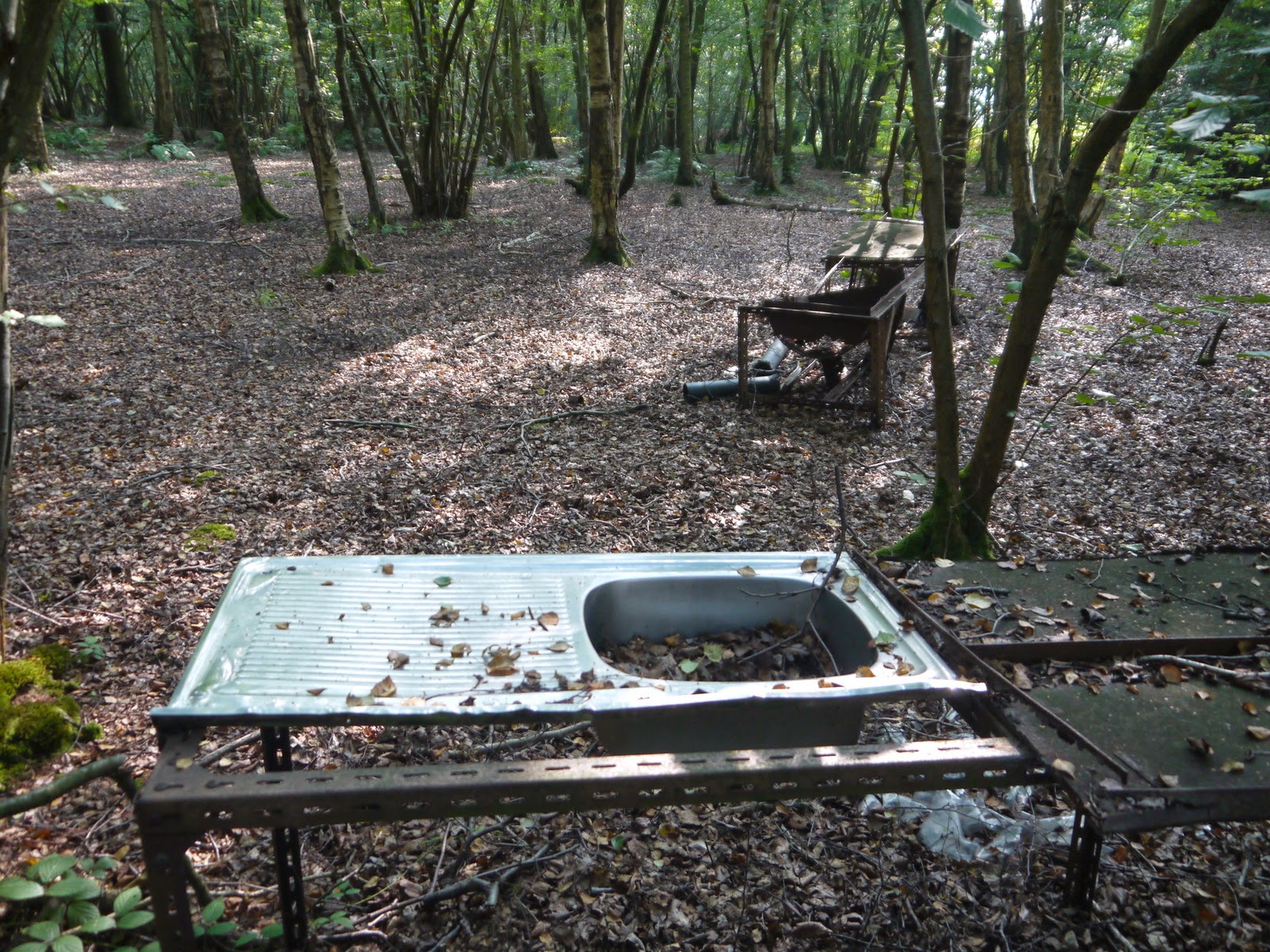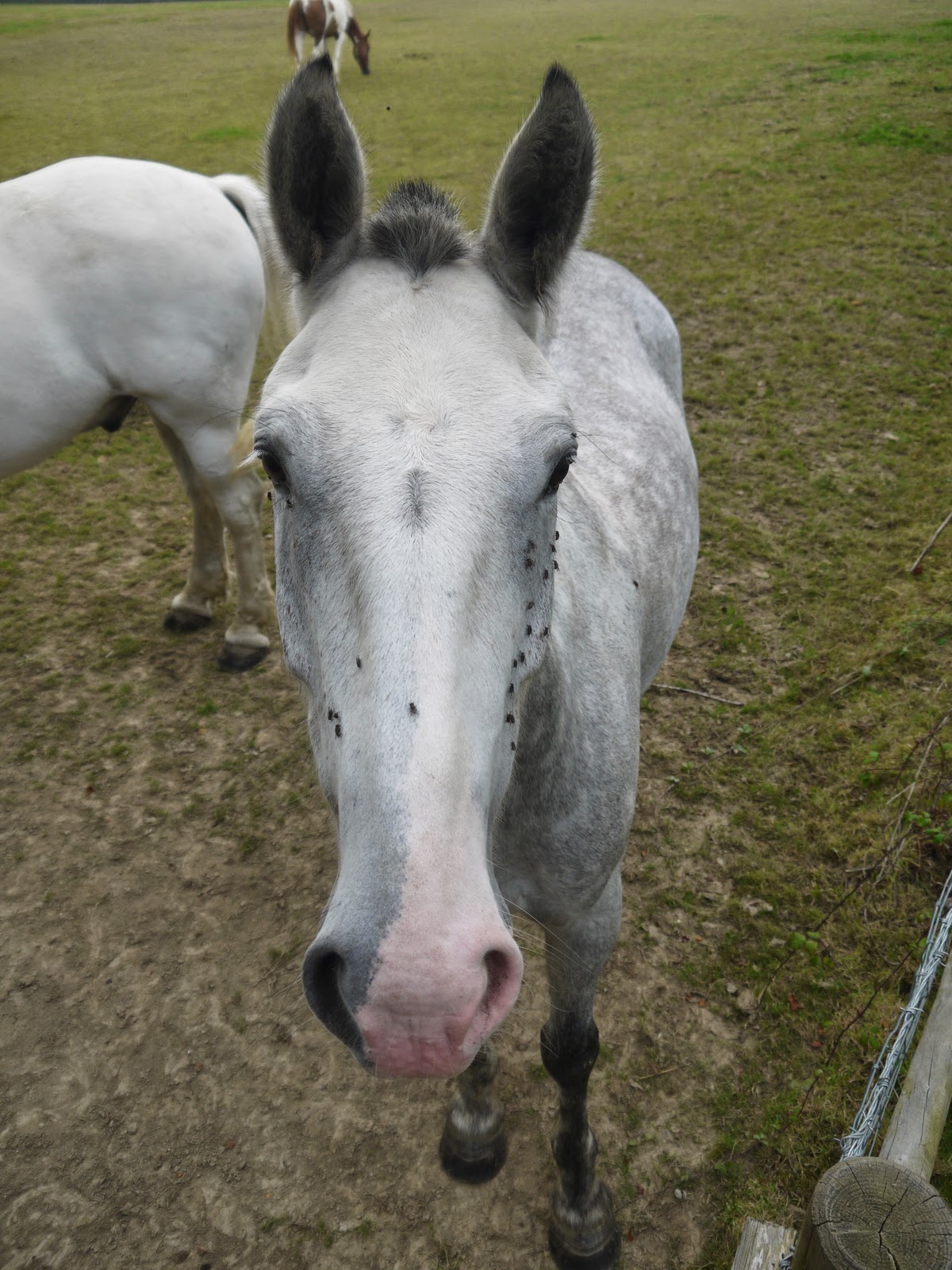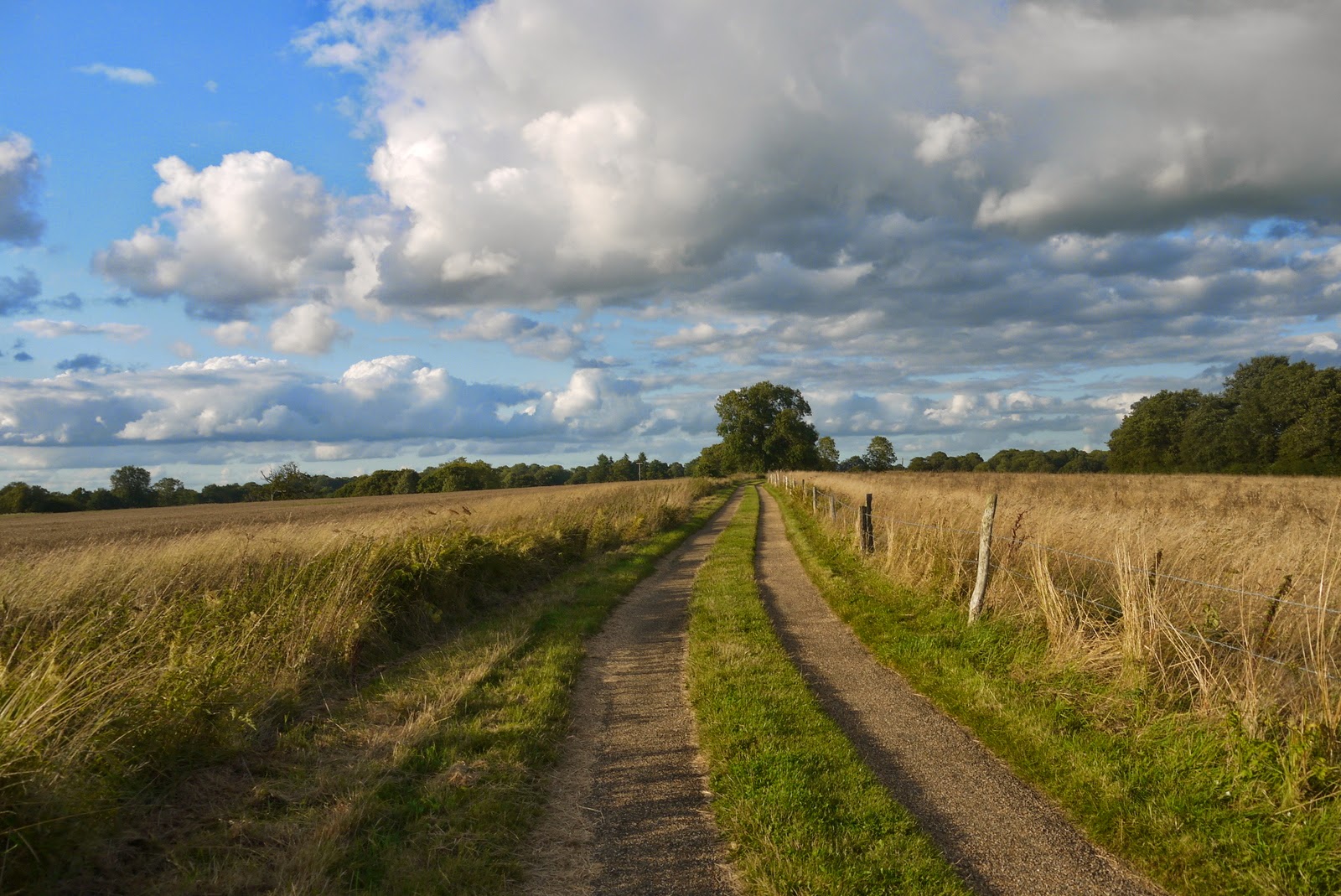 |
| Cowden Church |
Several more months have ticked
away without me being able to do more of this walk and I was anxious to do
more. Now I am the other side of East
Grinstead it is getting a little harder to find a long enough time slot to walk
the route but on this Sunday morning I was disciplined enough to get up very
early and take myself off to Cowden village.
I parked up by Cowden
Church and as I admired
the steeple and took in the ambience of the early autumnal morning I jumped out
of my skin when I was greeted by the lady vicar who had come up behind me on
her way to get ready for the morning services.
I politely told her I wasn’t lost before heading on my way.
 |
| Dahlia Show |
I crossed the nearby allotment
site, still showing plenty of colour in the shape of the last sweet peas of the
season and dahlias in full bloom. Even
the raspberry bushes still had plenty of fruit on them. My feet though got extremely wet very quickly
due to the heavy dew on the grass as I walked along the path between plots.
 |
| Holtye Common |
I soon came upon the local golf
course – yet another one. This part of Sussex has more
golf courses than almost anywhere else I know.
Initially the going was good but I soon got a bit lost as I lost the
signs for the path about halfway across and went around in circles a bit before
finally finding my way out and onto the nearby road. I went downhill a little way, passing a
hapless squirrel that had recently been squashed by the looks of things and was
under surveillance from a nearby crow. I
am guessing he thought I was competition for this delectable meal…
 |
| Roger's Town |
My onward route then passed
through Holtye Common, a delightful stretch of birch woodland that soon became
another path alongside another golf course.
This one seemed quite a challenge as the guys who were playing the hole
near me were really struggling with the significant slope of the valley they
were trying to get their ball over. I
passed quickly, feeling rather amused by their frustration.
 |
| Abandoned Phone Box |
After passing through more woods
I crossed a road to find a very old looking telephone box that was slowly
receding into nature. Obviously when I
looked inside there was no telephone but there was one of the notices that BT
provide to encourage the local community to take the box on as a community
asset and thereby safeguard its future.
The funny thing was though that the consultation period was 42 days from
the date of the poster. That was in
2009! A little overdue methinks…
 |
| Bright Berries |
Some road walking followed and
this seemed to be an unusually busy lane.
I suspect that part of the issue was that there were some lost drivers
all looking for a fishing lake which was obviously not easily found with their
Satnav devices. I was asked for
directions by a couple of them but despite having a map I wasn’t a lot of help
for there are so many small ponds and lakes in this part of the county.
 |
| Hammerwood Country |
Eventually I left the road and
encountered my first overgrown path of the day which wasn’t fun to
negotiate. By the time I got out into
the open fields beyond I had been scratched plenty by the brambles and I was
wet through with dew from grass and other vegetation. Luckily the day was warming up by now and
despite my wetness it wasn’t too uncomfortable.
The walking wasn’t the most interesting for a while though – endless
field after endless field it seemed for a while until eventually I came out on
a field that overlooked Hammerwood
Park and my work didn’t
feel like it was in vain.
 |
| Hammerwood Park |
I had deliberately constructed
the route to get a look at Hammerwood
Park. This old house has had quite the history,
acting as Special Operations base during World War II. It was later owned by Led Zepellin who bought
it to house some of their family and group members. By the time they sold it in 1982 the old
house was in serious need of repair and luckily it was bought by David Pinnegar
who restored it back to its former glory.
The house opens during the summer months and hosts classical music
concerts and is probably one of the hidden gems of East
Sussex. Sadly although I
could see the house very well much of the view was obscured by some rather
unfortunately placed electricity pylons.
 |
| Even the Kitchen Sink |
I passed through Owletts Farm and
then an enclosed path with huge berry filled hedges either side of me. This section of path was a joy to walk along
as the autumn sun picked out some of the vibrant colours of the berries and
last flush of flowers. Soon the hedge
turned into woodland and I was rather surprised to see a number of abandoned
sink units left in the trees. I wondered
whether this was an abandoned campsite?
 |
| Tired Sign |
At the far end of the wood I
crossed back across the main road I had encountered earlier and headed towards
the path I had chosen through the woods on the other side. This was a complete nightmare – the path was
so overgrown it was almost impassable and although I persevered I really wished
I hadn’t. It was a complete nightmare
trying to get through to the other side and the road beyond. In fact what I
hadn’t realised was that the path was in fact a dead end and as I tried to
blunder through the last few yards to the road beyond I got my foot stuck in a
muddy bog and went round and round in circles trying to find a way out. In the end I probably trespassed my way
through the grounds of the very opulent houses in my way but by then I didn’t
much care for the prospect of going back through the thicket was far too much
to bear. My advice would be don’t come
this way!
 |
| Runners |
Eventually I found the safety of
the road beyond and was happy to walk some tarmac for a bit. The early sunny weather had by now given way
to gloomy greyness and this did not much help my mood. It was however the sort of cloud that I
thought could easily shift at any moment so I ploughed on, largely forgetting
the camera for quite a while. The
scenery was pleasant rather than memorable and I was pleased when I reunited
with a section of the SBP I had walked last time out. Much had changed since then – blossom had
given way to berries and the landscape looked tired rather than fresh and
vibrant.
 |
| Friendly Horses |
As I left the overlapped section
and followed the official SBP back towards Cowden. As I did so I encountered a running race of
some sort for the next mile or so I saw what seemed to be an endless stream of
runners in various states of fitness jogging in the opposite direction that I
was heading. Most had race faces on and
ignored me bu there were a few friendly ones who gave me a nod and a
smile. I seemed to lose them altogether
by the time I got to Jules Wood and from here on the path was devoid of people. On the whole I found this section rather dull
and it wasn’t helped by the rather grey and gloomy weather that has come
across. The autumn colours had yet to
fully develop either and so the whole walk rather felt less than satisfying. The only things of note that I passed by were
the rather wonderful Waystrode Manor, a half timbered grade II listed building
and a couple of murky looking dewponds.
 |
| Waystrode Manor |
On the whole this was a
disappointing walk not helped by the unexpected gloomy weather which closed
in. The non SBP part of the route was
also very difficult due to the largely overgrown state of the paths. It might be a while before I venture out on
the next section of the SBP.





































